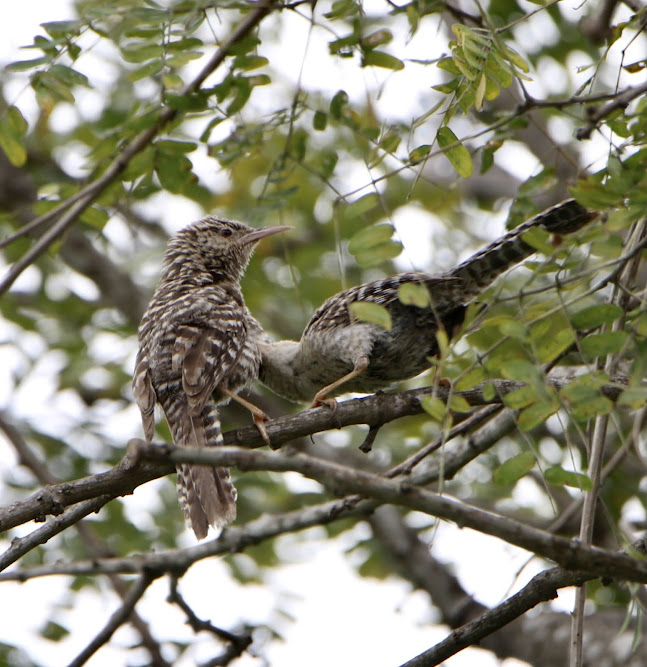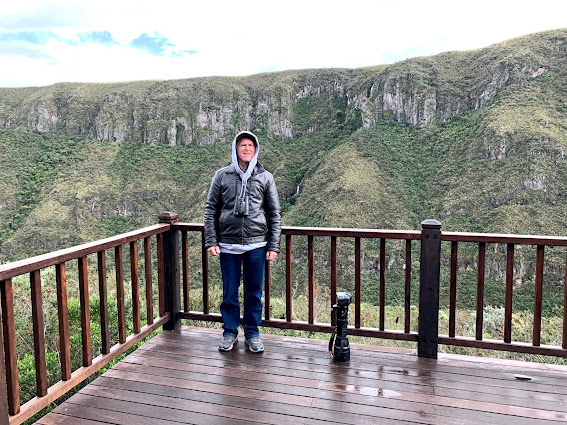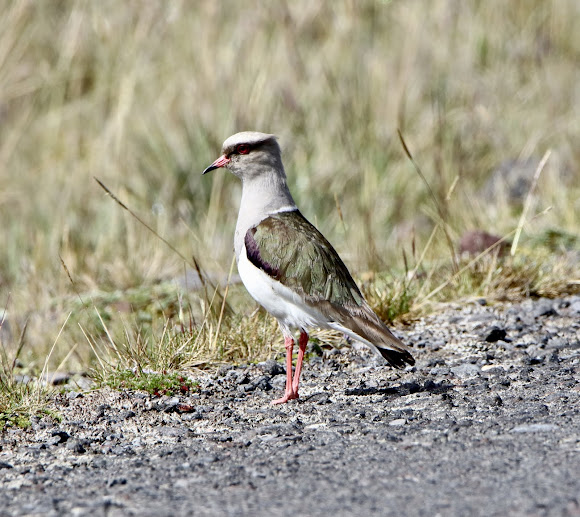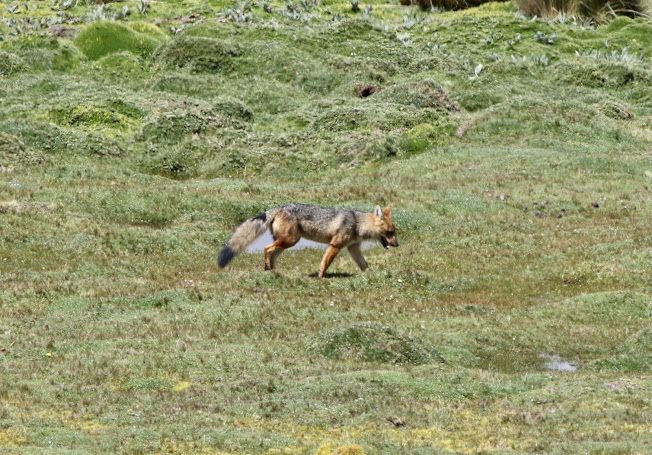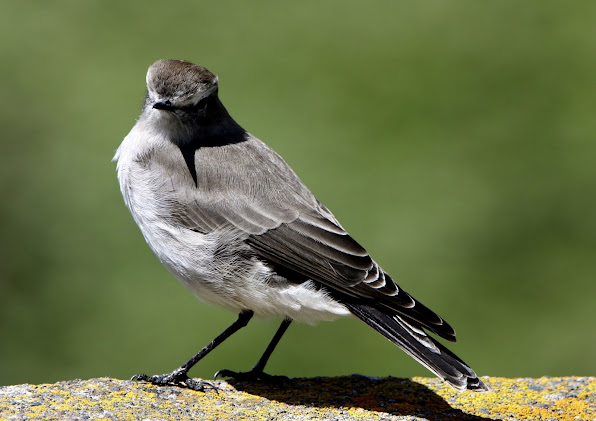3/6/21.
Today I hired a birding guide named Renee to take me birding. He was using a SUV of
sorts, I think a Mitsubishi which was probably nearing the end of its existence. About 2 miles down the Colibri Road we saw someone off to the side of the road with a scope. Turns out he was looking at a male Esmeraldes Woodstar, so we got out to have a look. The bird kept returning to a perch on a spindly snag not far away and not very high up as well. So I got half way decent pics. Hard to get good pics of such a tiny bird unless you are quite close. Turns out the guy with a scope was a birding guide from Mindo, so I got his contact info just in case I end up there in a little over a week. And even he had never seen the Esmeraldes Woodstar - it was a lifer for him. Amazing!
 |
| Male Esmeraldes Woodstar |
We drove to the end of the Colibri Road, and then walked across the river and started hiking upstream. Not long into the trek we found a pair of Guayaquil Woodpeckers which were not super offended by our presence, so I maneuvered a few feet down the trail and obtained some good shots.
 |
| Guayaquil Woodpecker |
In another hundred yards or so Renee located a Henna-hooded Foliage Gleaner. This species is a real skulker, so I did not hold out any hope for a photo, only getting brief glimpses of him in the deep thickets or flying across the river a few times.
It was great to be with someone who knew all the bird songs and was great at finding them. He used a laser light occasionally to help me get on a bird. Being mid age he still has good hearing and vision, senses which are getting dull for me.
Birds were vocal and often visible, so it was turning out to be a good morning. One bird I’d been hoping to see was the Violet-bellied Hummingbird, and we chanced upon a beautiful male. But the best part was just ahead. After about a half mile we veered off the river onto a trail into the jungle, and in a couple hundred yards were at a cabin. We took off our day packs, and Renee began boiling some water. Then we continued on the trail another hundred yards to a large enclosure made of cyclone fencing, maybe 20 X 50 feet and 15 feet high. This was the cage for 9 Great Green Macaws set to be introduced into the wild on May 9, in about 2 months. I had many questions regarding this program, most of which will have to go unanswered due to the language barrier. As I did not have cell service, I could not use Google Translate that far into the jungle.
Renee works for the Jocotoco Foundation and I suspect today was his turn to feed the macaws and clean their cage. It was amazing just how loud they were at times. If you were too close when they went off, you needed to cover your ears. There were 2 birds inside a smaller cage within the enclosure because these were mean to the others.
I am sure this species used to be more common. But human progress dictates that the mature forests are needed for lumber, and since the macaws need large trees with a large cavity to nest in, little by little they were reduced in number so that there are very few now in the wild, farther north in the jungles Esmeraldes. There used to be some in the Cerro Blanco reserve, close to Guayaquil where I plan to go just before departing back to the states, but these have disappeared some years back.
Some questions I have are: Were these birds raised from eggs or were they young from other nests? What is the expected survival percentage? Will the window be left open for them to return for food? Are there nest boxes placed in various places for them to use? Has this been tried before? If so, are any of those birds still alive? Are they safe in the Ayampe Reserve from logging and nest robbers for the pet bird trade? How often are they fed?
I was unsure if there were procedures/policies in place for taking visitors here, but Renee did not mention anything, and we simply walked into the enclosure and he proceeded to sweep it out with a makeshift broom. I would have helped but there was only one. He then gathered up the feeding and water bowls, brought them back to the cabin where he washed them in the boiling water with some kind of disinfectant. Then he filled them up with fruit and vitamin water, and placed them on the stands for the birds. I think they knew the routine and quickly came for the meal.
 |
| A Great Green Macaw. What a beauty! |
While this was going on I noticed a bird outside the enclosure who was building a nest. Eventually we figured out there were a pair of Pacific Eleanias, and it appeared they had just begun within the last day or two.
A lifer for me!
 |
| Pacific Eleania with nest building material. |
After taking care of the Macaws while we were walking back toward the cabin, I saw a female Plain Antvireo who I was able to get a reasonable shot of:
 |
| Female Plain Antvireo |
After Renee’s work was done there, we retreated to the river and continued upstream. Birds were still active and we were always stopping to view them. At one point 2 raptors were above us, one of which I got pics of appeared to be a Great Black Hawk. But my pics show some features that lead me to doubt such, so I sent one to Rich Hoyer to figure out. Rich got back quickly relaying the bird in question is a Grey-backed Hawk. Viewed against a bright overhead sky we thought the bird was quite dark, but my photos show it was actually a dull, light color. I’ll have to show Renee that when we get together on Thursday.
 |
| Grey-backed Hawk |
Renee heard something on the south side of the river, and after a little searching found a Yellow Tyrannulet, a new one for my Ecuador list. At the same place we watched an Amazilia Hummer dip into the river for a drink, or maybe a quick bath. Since he acted like he would do the same thing again, I readied my camera and took a few pics. They are not real clear, but I did get one of the bird partly submerged. Renee thought I was some photographic genius. All I did was start the burst when it looked like the bird was headed to the water, and luckily it came together at the right time.
 |
| Amazilia Hummingbird |
 |
| Amazilia Hummingbird |
 |
| Amazilia Hummingbird |
By now the sun was beating down on us, and I knew if I continued much farther I’d be overheating. So we turned back. A couple times I cupped some water in my hands and cooled off my face. When almost back I asked Renee about birding in the coming week, specifically a little north where it is dryer for different species, so we set it up to do that on Thursday.
As soon as I could I hopped in the pool to cool off. As there were 2 ripe papayas on the tree next to the pool, I picked them and brought them to the kitchen shortly after. My pedometer says I walked 4 miles today, so am getting in my exercise.
After today I am within 4 of reaching 600 for the country, so it seems very likely I’ll get there, maybe before I leave the area. There are still a few “gettable” ones locally, so we shall see how things pan out.











